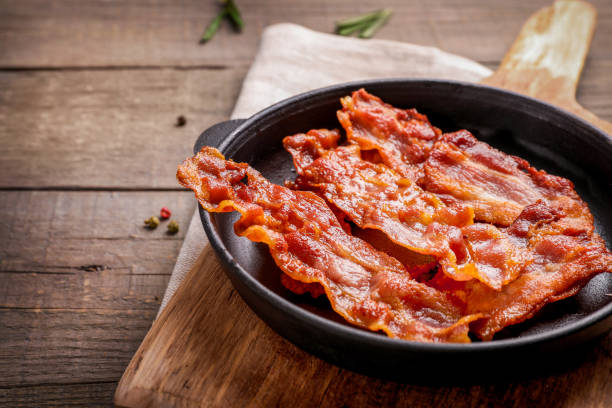Keyword: why is bacon so expensive
Bacon, that sizzling, savory delight that graces breakfast tables, sandwiches, and countless culinary creations, has become a symbol of indulgence and comfort for many. Yet, in recent years, it has become a symbol of frustration for budget-conscious consumers. As they stand in the grocery store aisle, examining the ever-increasing price tags, they might wonder: Why is bacon so expensive? This article delves into the complex web of factors driving the cost of everyone’s favorite porky delight, shedding light on the economic, environmental, and dietary forces that have led to the bacon dilemma. From fluctuating pig prices to global demand trends, we’ll uncover the multifaceted reasons behind the rising cost of bacon, helping you understand why this beloved breakfast staple is, at times, harder to savor without feeling a pinch in your wallet.
Why is Bacon So Expensive? Top 10 Reasons
- Supply Chain Disruptions: The COVID-19 pandemic and other unforeseen disruptions in the supply chain have had a significant impact on bacon production and distribution, leading to shortages and increased costs.
- Rising Feed Costs: The cost of animal feed, mainly corn and soybeans, which are essential for pig farming, has increased. This, in turn, has driven up the overall cost of raising pigs for bacon production.
- Labor Costs: Labor shortages in the agricultural and meat processing industries have increased wages and benefits for workers, raising the operational costs of bacon producers.
- Healthier Alternatives: As consumers become more health-conscious, some have reduced their bacon consumption, causing a shift in demand that can influence pricing.
- Global Demand: Bacon’s popularity isn’t limited to just one region. Growing global demand for bacon has pressured the supply, impacting prices worldwide.
- Environmental Regulations: Stricter environmental regulations in some regions have forced pig farms to invest in cleaner and more sustainable practices, which can increase production costs.
- Meat Processing Costs: Processing bacon requires specific equipment and expertise, and maintaining these facilities can be costly, contributing to higher prices.
- Pig Diseases: Outbreaks of diseases like African swine fever and porcine epidemic diarrhea virus can reduce pig populations, affecting the overall supply and driving up costs.
- Packaging and Transportation Costs: The cost of packaging materials and transportation services has risen, influencing the final retail price of bacon.
- Fluctuating Pig Prices: The price of live pigs is subject to market fluctuations, impacting the overall cost of bacon production. Events like pig diseases or extreme weather can disrupt supply and affect pricing.
Understanding these ten factors provides insight into the intricate web of elements influencing the cost of bacon. It’s a combination of economic, environmental, and social forces that collectively contribute to the delicious, yet sometimes expensive, slices we crave.
Frequently Asked Questions
- Why has bacon become more expensive recently? Bacon prices have risen due to supply chain disruptions, increased feed costs, and labor shortages, impacting production and distribution.
- What role do global demand trends play in bacon’s charge? Growing worldwide demand for bacon has created a competitive market, which affects prices and availability.
- How do stricter environmental regulations impact bacon prices? Stringent ecological rules force pig farms to invest in sustainable practices, increasing the cost of raising pigs for bacon production.
- Why do fluctuations in pig prices affect bacon costs? The price of live pigs is subject to market volatility, and disruptions like disease outbreaks can lead to reduced supply and higher bacon prices.
- Are there healthier alternatives contributing to bacon’s cost increase? Shifting consumer preferences towards healthier eating habits has impacted the demand for bacon, potentially affecting pricing.
Conclusion
The soaring cost of bacon can be attributed to a complex interplay of factors, from supply chain disruptions to global demand trends, labor issues, and environmental regulations. The beloved breakfast staple may remain a cherished indulgence, but understanding the multifaceted reasons behind its rising price can help consumers make more informed choices and savor each crispy bite with a deeper appreciation of the challenges within the bacon industry.
References
- en.as.com: Why is bacon so expensive?
- cbsnews.com: Increasing price of bacon.
Recommendations
- How To Become A Vegetarian In 2023 | Full Step Guide
- How To Become a Certified Health Coach in 2023 | Full Step Guide
- How To Become A Seller On Amazon In 2023 | Full Step Guide
- How to Become a Savvy Crypto Person in 2023 | Full Step Guide






